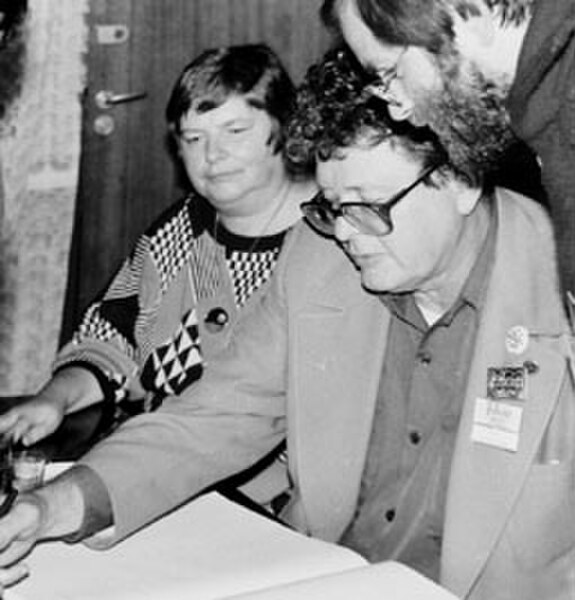Harry Clement Stubbs, better known by the pen name Hal Clement, was an American science fiction writer and a leader of the hard science fiction subgenre. He also painted astronomically oriented artworks under the name George Richard.
Hal Clement
Editor Sam Merwin Jr. added 10,000 words to Clement's novella "Planetfall" for its publication in the February 1957 issue of Satellite Science Fiction as "Planet for Plunder".
Clement's short story "Hot Planet" took the cover of the August 1963 issue of Galaxy Science Fiction.
Hard science fiction is a category of science fiction characterized by concern for scientific accuracy and logic. The term was first used in print in 1957 by P. Schuyler Miller in a review of John W. Campbell's Islands of Space in the November issue of Astounding Science Fiction. The complementary term soft science fiction, formed by analogy to the popular distinction between the "hard" (natural) and "soft" (social) sciences, first appeared in the late 1970s. Though there are examples generally considered as "hard" science fiction such as Isaac Asimov's Foundation series, built on mathematical sociology, science fiction critic Gary Westfahl argues that while neither term is part of a rigorous taxonomy, they are approximate ways of characterizing stories that reviewers and commentators have found useful.
Arthur C. Clarke, one of the most significant writers of hard science fiction
Poul Anderson, author of Tau Zero, Kyrie and others
Frank R. Paul's cover for the last issue (December 1953) of Science-Fiction Plus
Larry Niven, author of Ringworld, "Inconstant Moon", "The Hole Man" and others.







